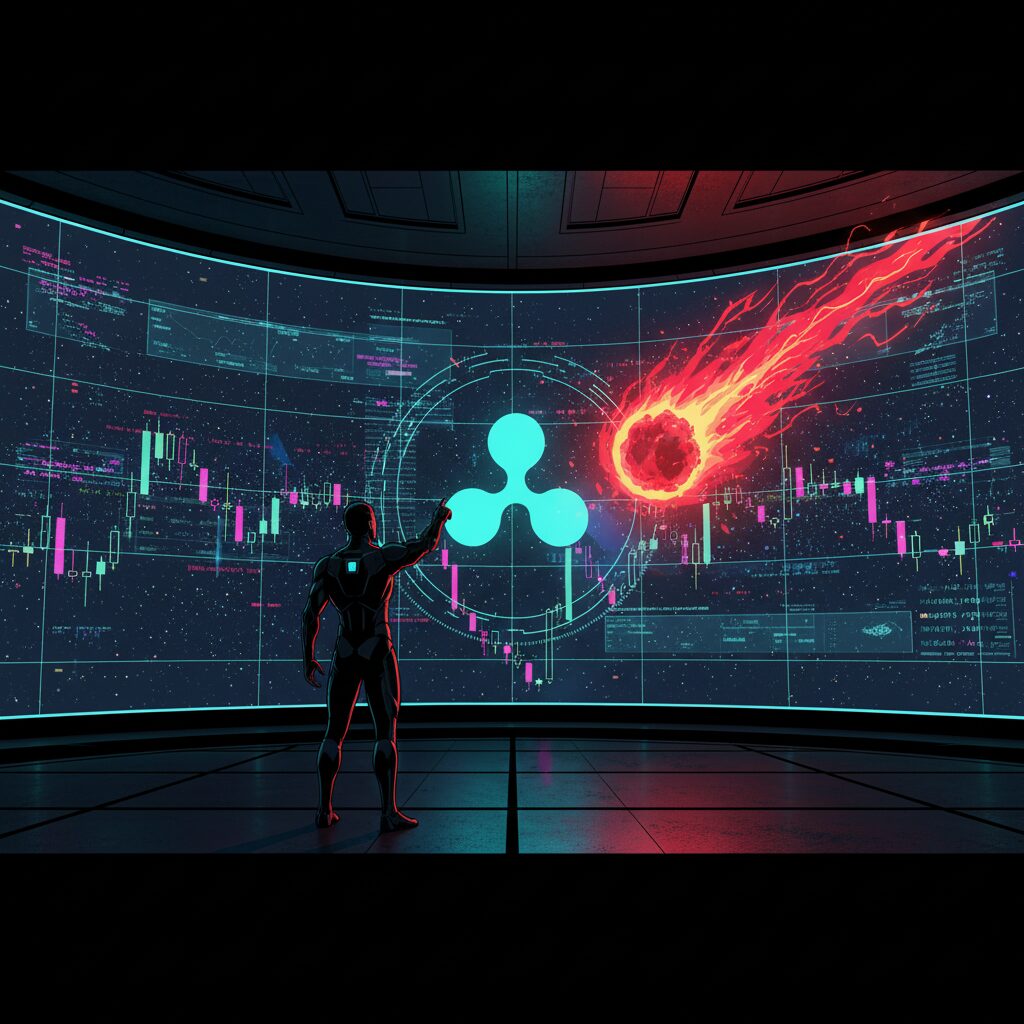Aave vs. Morpho: A Deep Dive into Two DeFi Lending Giants

In the world of Decentralized Finance (DeFi), lending protocols Aave and Morpho represent two distinct philosophies for capital efficiency. Aave is a foundational, battle-tested protocol built on shared liquidity pools, while Morpho offers a newer, more direct peer-to-peer approach. Understanding their core differences is key to grasping the evolution of on-chain lending.
Contrasting Philosophies: Pooled vs. Isolated Liquidity
Aave operates on a classic pooled liquidity model. Users deposit assets into large pools, from which others can borrow. A smart contract manages the entire process, including collateralization and variable interest rates. With over $35 billion in Total Value Locked (TVL) across numerous chains, Aave’s system is simple, stable, and has proven its reliability. However, this model can lead to inefficiency when fund utilization is low, causing capital to sit idle. Aave mitigates this by automatically adjusting interest rates—lowering them when utilization drops and raising them when it’s high.
Morpho takes a different path with a highly decentralized lending model that prioritizes direct connections. Instead of a single shared pool, it facilitates peer-to-peer lending. If a direct match between a borrower and lender isn’t available, Morpho routes the transaction through established pools like those on Aave or Compound. This design ensures capital doesn’t remain idle and allows the utilization ratio to reach 100%, a contrast to Aave which typically limits utilization to between 80% and 90% to maintain a liquidity buffer.
A Tale of Two Risk Models
The structural differences between the protocols lead to distinct risk management frameworks. Aave spreads risk across its entire user base because all participants share the same liquidity pools. A sharp drop in a major collateral asset could trigger widespread liquidations, making its risk mechanism robust but systemic.
Morpho, on the other hand, isolates risk. Its architecture is built on components like Morpho Blue, which allows anyone to create isolated lending markets with immutable parameters. Each market functions as its own risk container, meaning a collapse in one market won’t directly impact others. While this approach enhances safety and simplifies auditing, its main trade-off is potential liquidity fragmentation, as capital is scattered across many smaller, isolated markets.
Market Snapshot and Token Economics
Aave (AAVE) is currently trading at $195, with a market capitalization of $3 billion and a Fully Diluted Valuation (FDV) of $3.1 billion. The protocol’s TVL stands at an impressive $35.2 billion. The AAVE token serves both utility and governance functions within its ecosystem. Aave also launched GHO, its over-collateralized stablecoin, which has maintained stability in 2025 after experiencing some volatility following its 2024 launch.
Morpho (MORPHO) trades at $1.66, with a market cap of $575 million and an FDV of $840 million against a TVL of $12.5 billion. Similar to Aave, the MORPHO token is used for utility and governance. When comparing the FDV to TVL ratio, Morpho’s is 0.067 while Aave’s is 0.088, a metric some analysts use to gauge relative valuation.
Governance and Security Track Record
Aave’s governance is an active and complex process, with major upgrades requiring formal Aave Improvement Proposals (AIPs). In contrast, Morpho’s governance is designed to be leaner, as its immutable markets require fewer ongoing decisions. Its vaults and borrowers operate with greater independence.
Regarding security, Aave’s core protocol has never been compromised, though a peripheral contract was once exploited for approximately $56,000 without affecting user funds. Morpho has experienced two security incidents. One involved a white-hat operator who intercepted and later returned $2.6 million in assets, highlighting a potential vulnerability that was addressed.
Conclusion
Aave and Morpho offer compelling but different solutions for DeFi lending. Aave provides a proven, highly liquid, and systemic model that appeals to users seeking stability and deep liquidity. Morpho offers a more capital-efficient and risk-isolated alternative that may provide better yields for suppliers. The choice between them ultimately depends on a user’s priorities, whether they favor the robust, pooled liquidity of an established leader or the innovative, peer-to-peer efficiency of a challenger.











